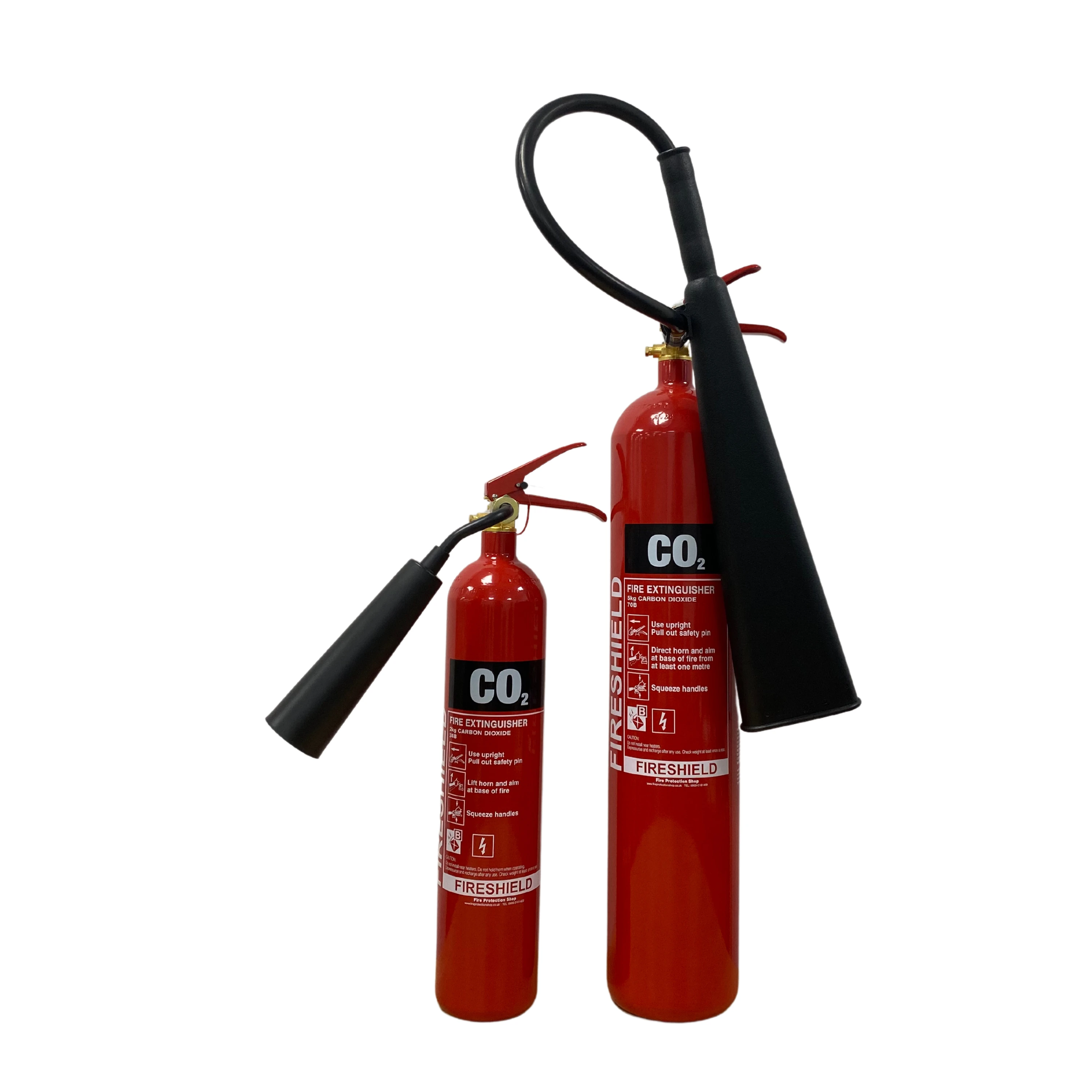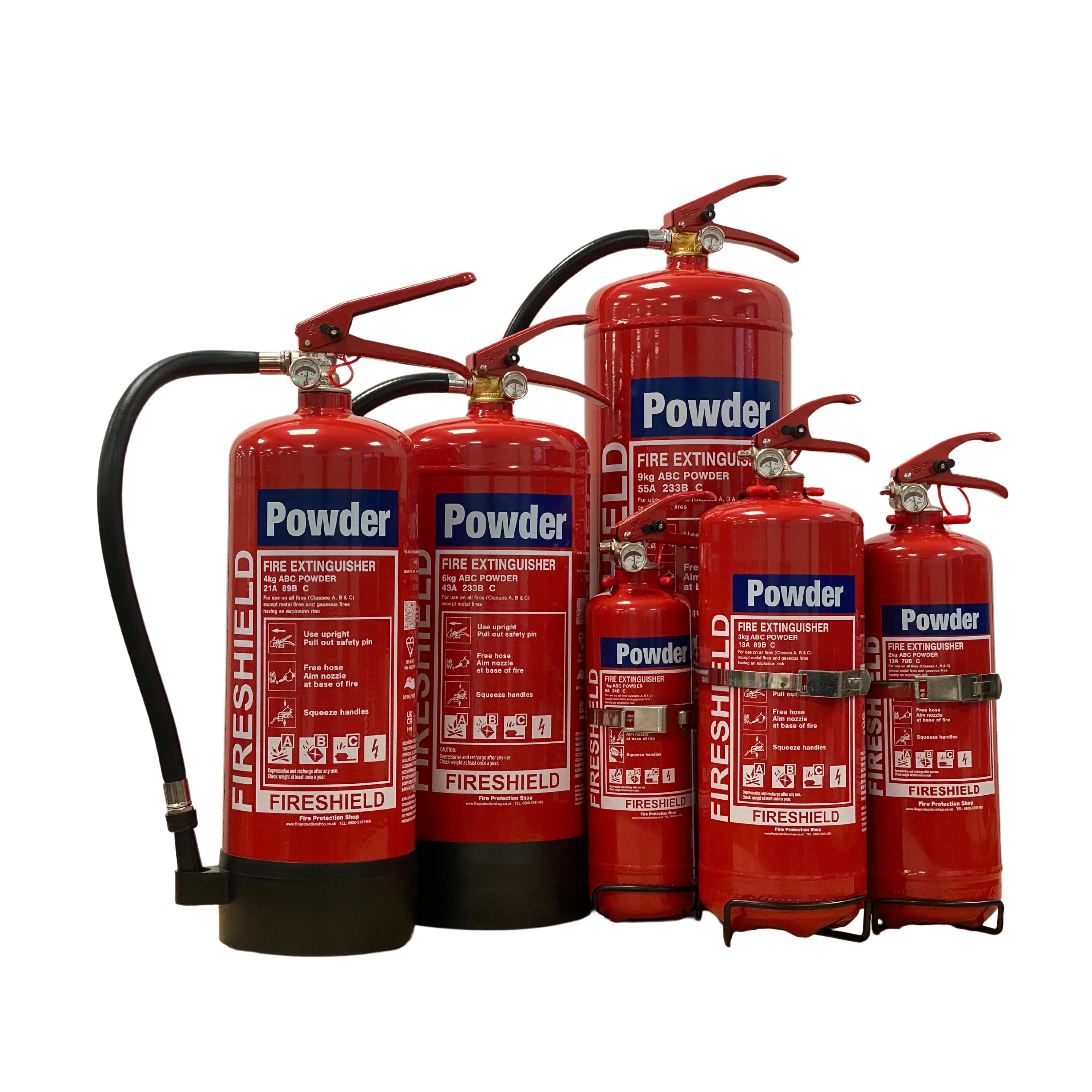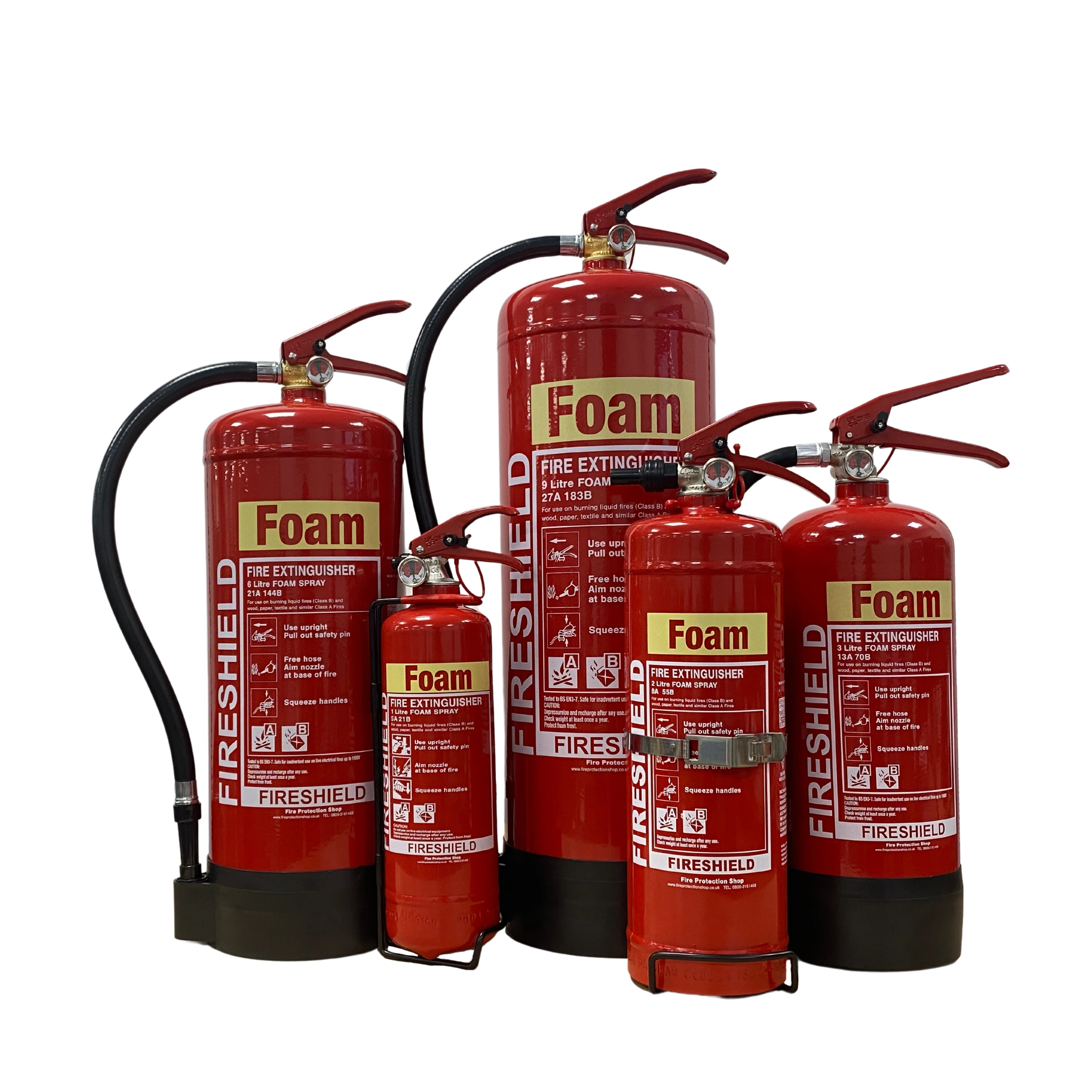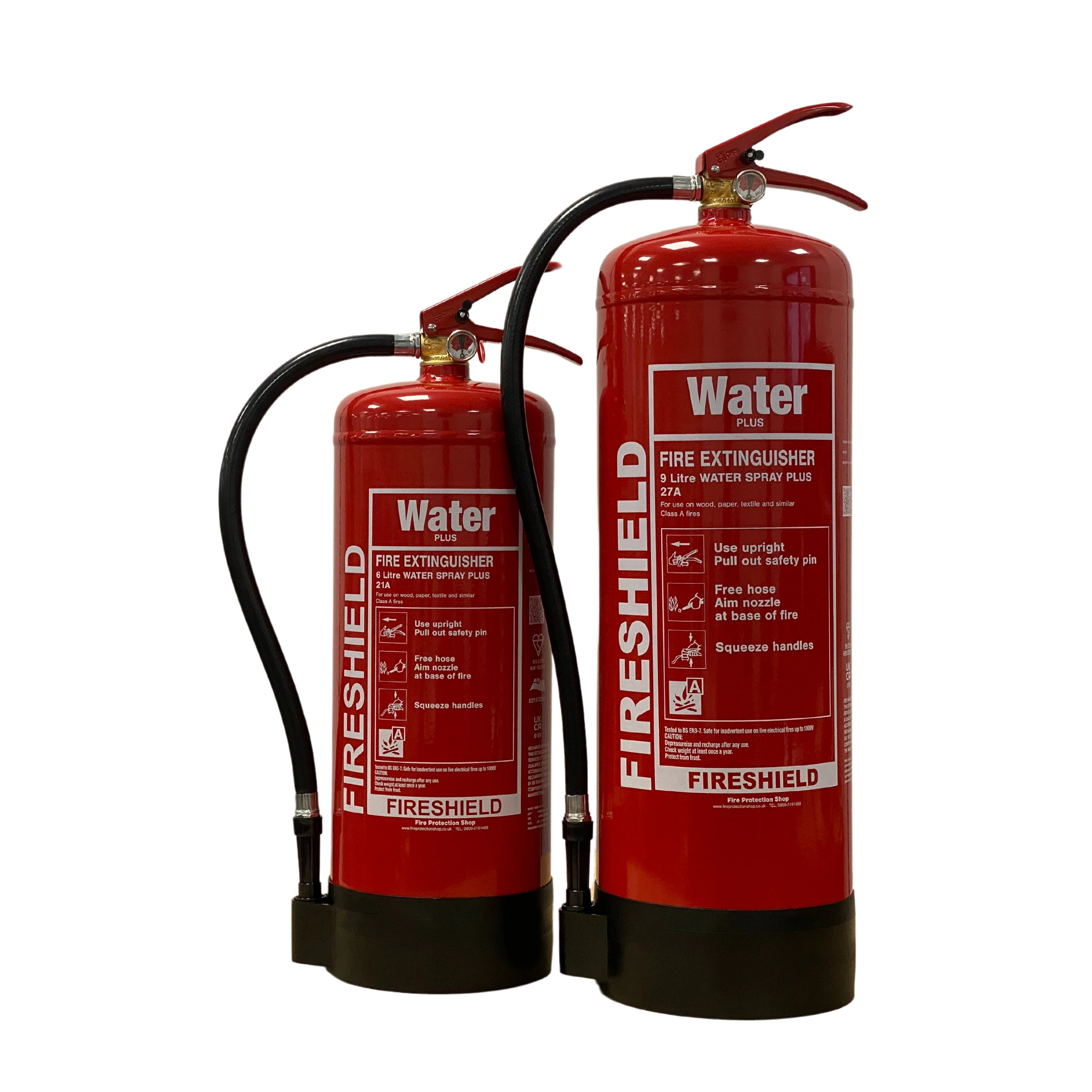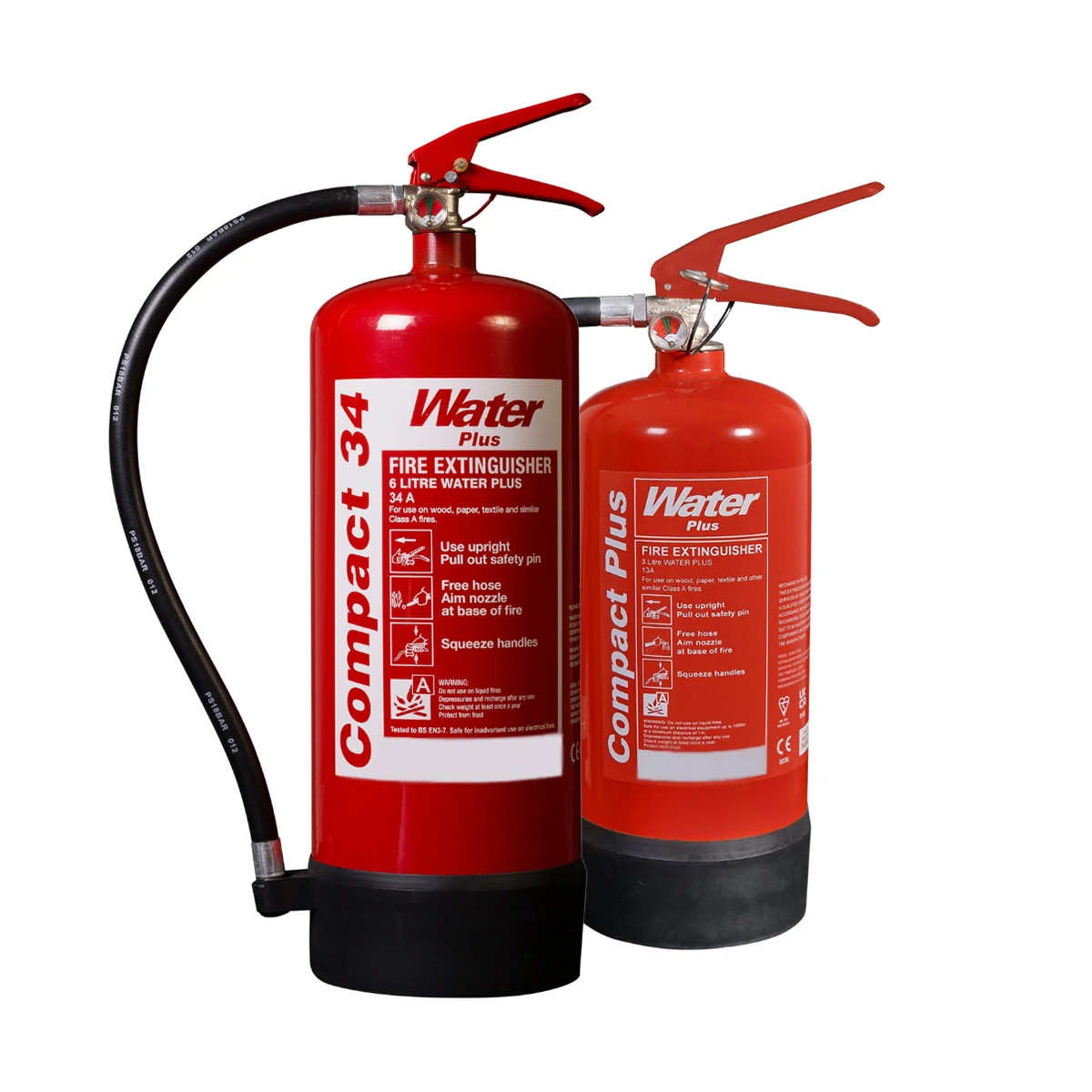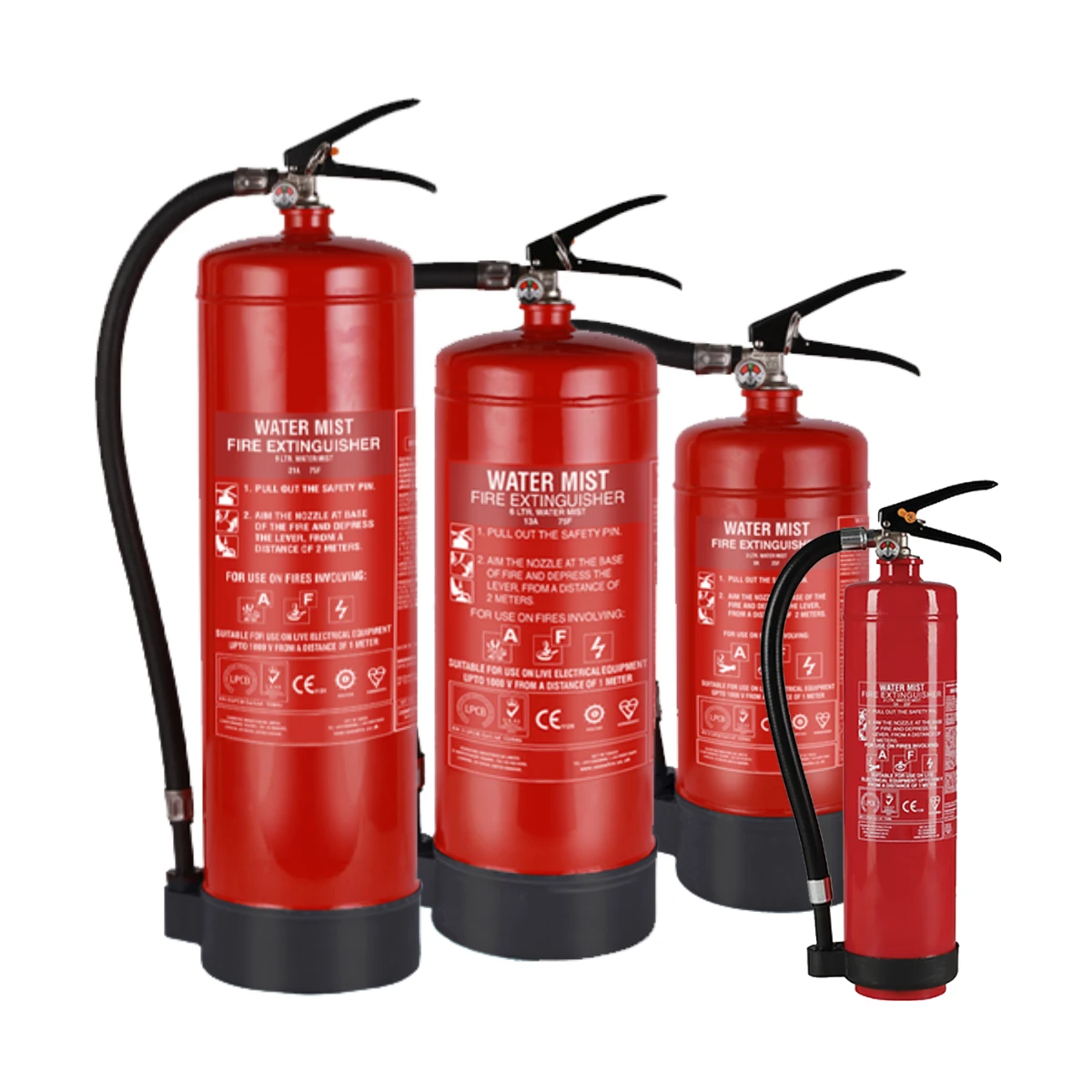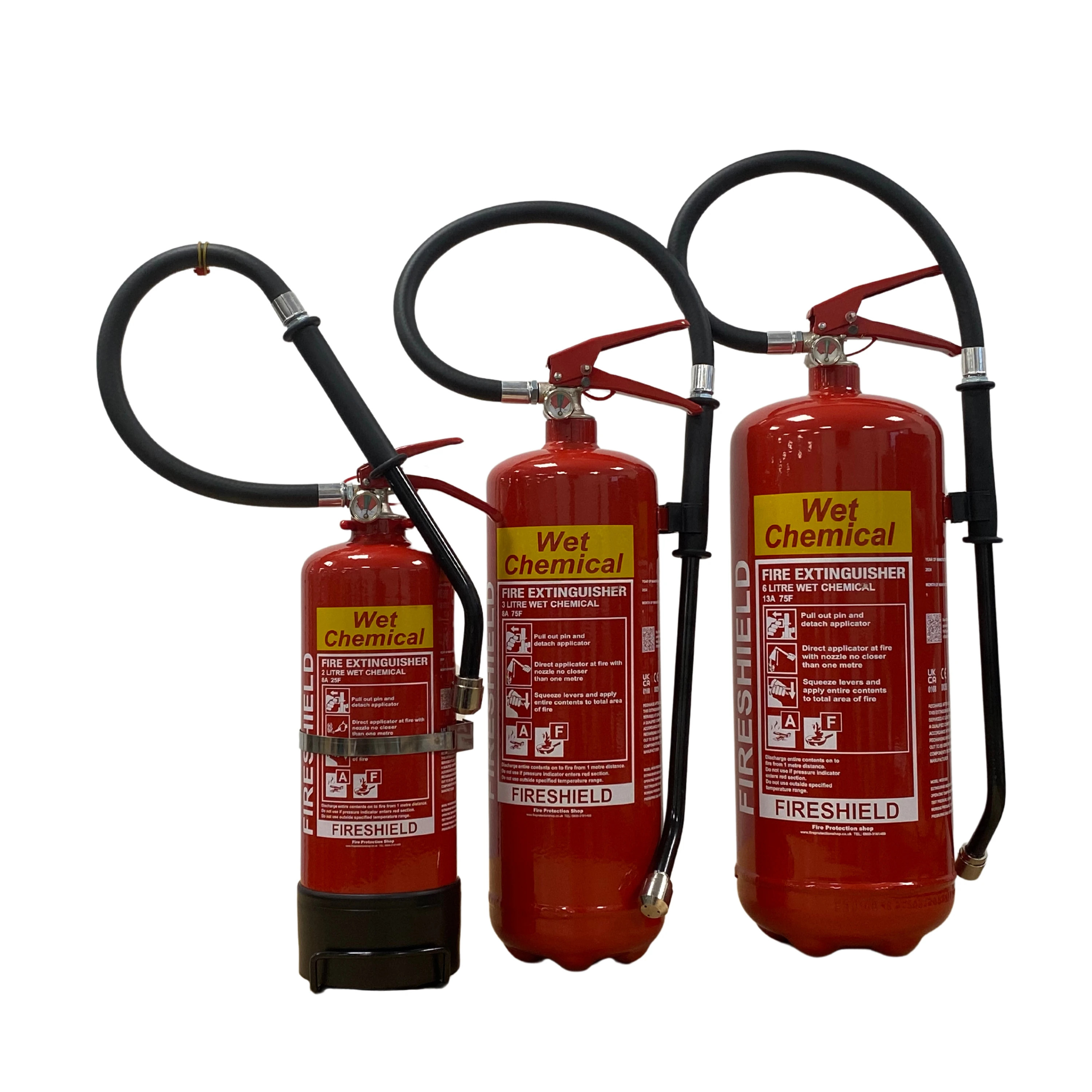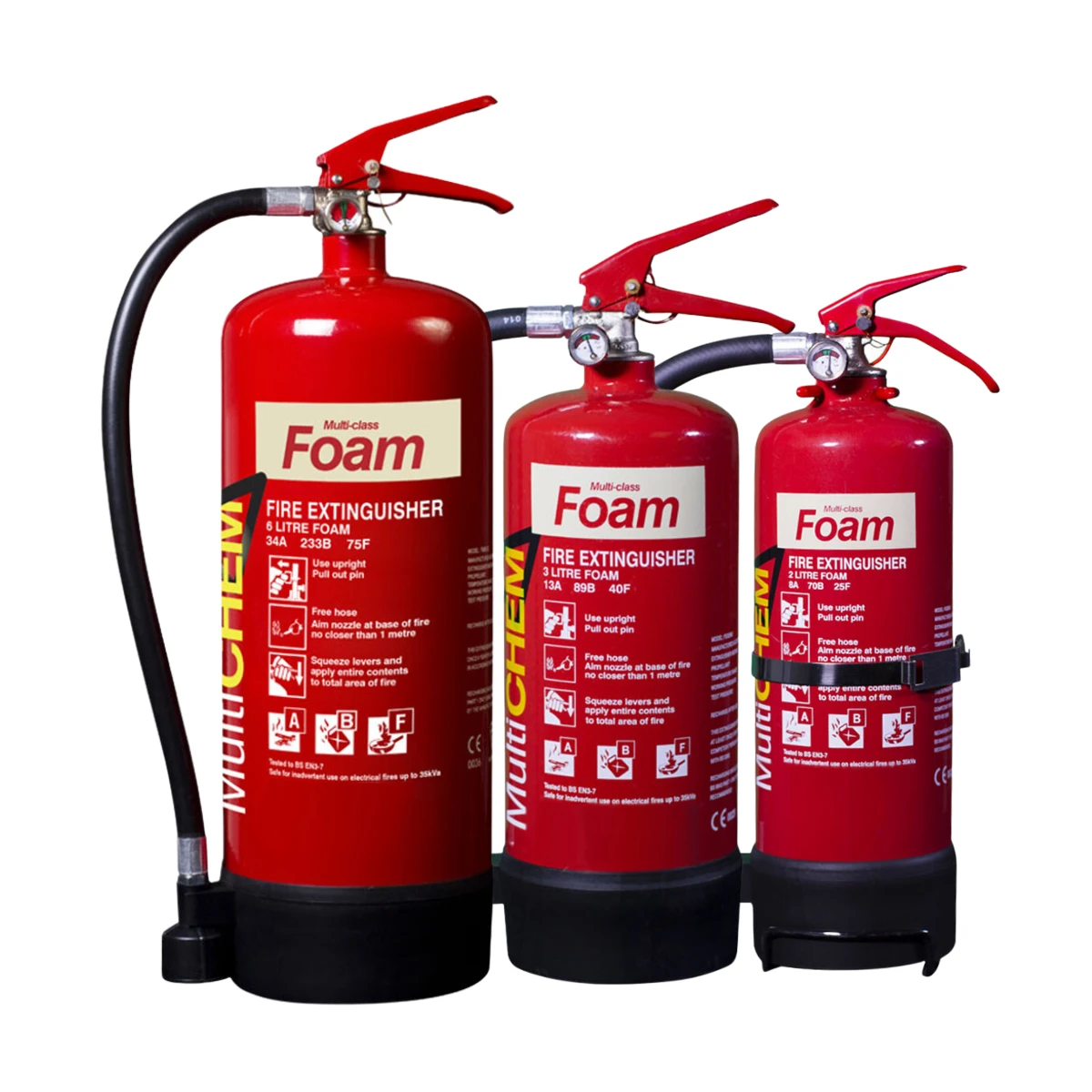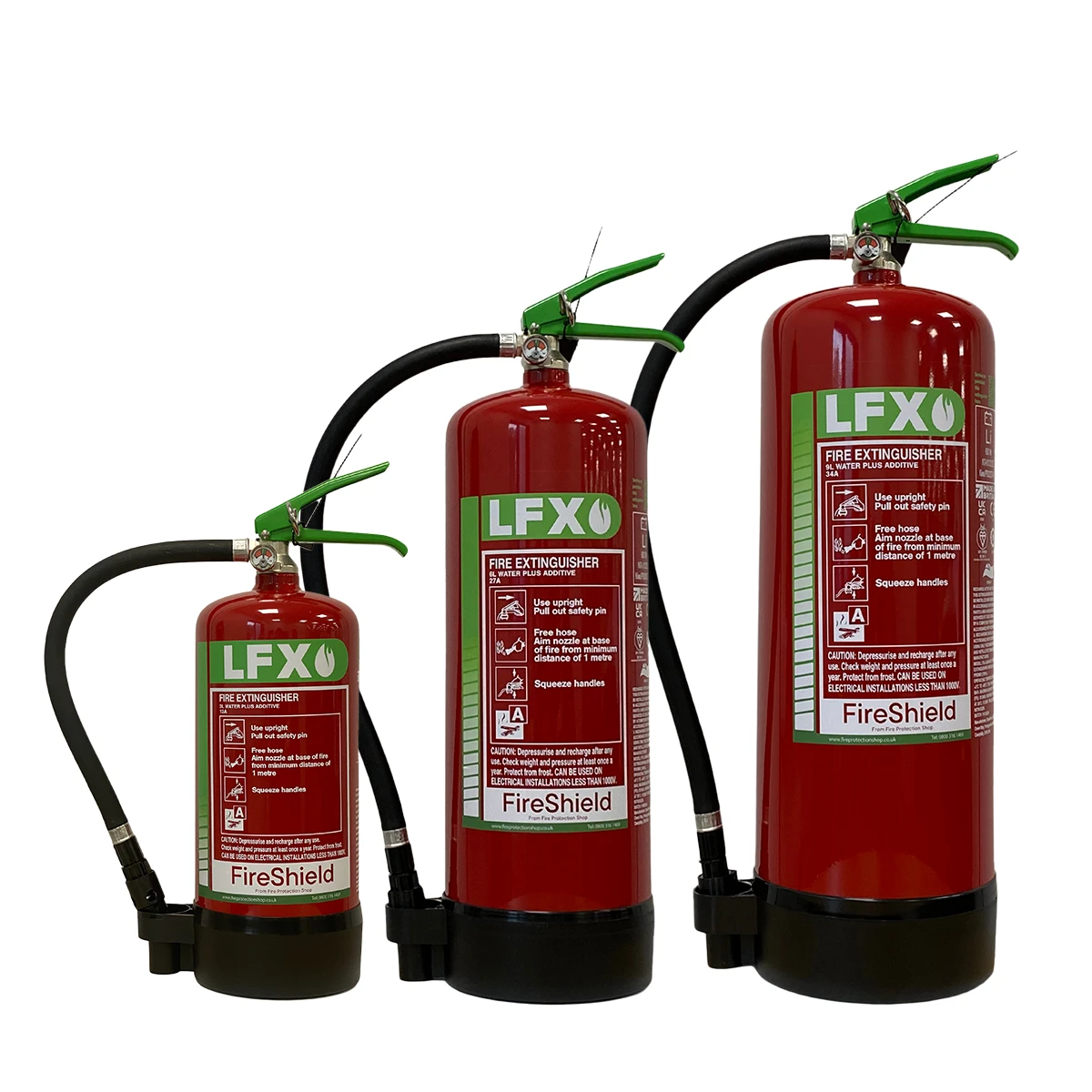Fire Equipment Servicing? Shop Now
Fire Equipment Servicing? Shop Now


























 Book a service
Book a service

In the event of a fire, selecting the appropriate fire extinguisher is crucial. Misusing a fire extinguisher can worsen the situation by spreading the flames.
Class A, Flammable Solids - Cloth, Paper, Wood etc
Class B, Flammable Liquids - Alcohol, Gasoline, Fuel
Class C, Flammable Gas - Propane, Butane
Class F, Cooking Oils, Fats
FireShield, a reputable British company, manufactures fire extinguishers that meet stringent BS EN3 standards, allowing them to be distributed in the UK and Europe. These fire extinguishers are ideal for general use in offices, homes and vehicles. Designed for durability, FireShield's extinguishers often feature MED approvals, corrosion-resistant cylinders, and brass valve assemblies. Their robust outer casings are built to withstand harsh weather conditions.

In an office setting, you would typically find several types of fire extinguishers, each designed to tackle specific types of fires. The most common types include water fire extinguishers, which are labelled red and used for fires involving solid materials such as paper, wood, and textiles (Class A).
Carbon dioxide (CO₂) fire extinguishers, marked with a black label, are intended for fires involving flammable liquids (Class B) and electrical equipment.
Lastly, EnviroFoam fire extinguishers, identified by a cream label, are effective on fires involving both solid materials (Class A) and flammable liquids (Class B), such as petrol and paint.
Fire safety in educational institutions is paramount to ensure the protection of students, staff, and property. Among the essential equipment, fluorine-free fire extinguishers are crucial as they provide effective fire suppression without releasing harmful fluorinated chemicals into the environment, making them a safer choice for school settings.
Fire blankets should also be readily available, particularly in science labs and kitchens, as they can quickly smother small fires or wrap around individuals whose clothing has caught fire.
Additionally, clear and visible fire safety signage is vital throughout the premises to guide occupants towards exits and firefighting equipment, ensuring that everyone can evacuate swiftly and safely in case of an emergency. Proper placement and regular maintenance of these safety measures can significantly reduce the risk of injury and enhance overall safety in educational environments.

A: The main types are Water, Foam, Carbon Dioxide (CO₂), Dry Powder, and Wet Chemical extinguishers. Each is designed for different classes of fires:
Water: Class A (solids like wood, paper, textiles)
Foam: Class A and B (solids and flammable liquids)
CO₂: Class B and Electrical (flammable liquids and electrical equipment)
Dry Powder: Class A, B, C, and Electrical (solids, flammable liquids and gases, electrical equipment)
Wet Chemical: Class F (cooking oils and fats)

A: Check the label on the extinguisher which indicates the classes of fire it is suitable for. Training and signage in your workplace can also provide guidance.

A: Follow the PASS technique:
P: Pull the pin.
A: Aim the nozzle at the base of the fire.
S: Squeeze the handle.
S: Sweep from side to side.

A: No, using the wrong type of extinguisher can be dangerous. For example, using a water extinguisher on an electrical fire can cause electric shock.

A: Most portable fire extinguishers discharge completely in about 10 to 25 seconds.

A: Monthly visual inspections are recommended, with a more thorough annual inspection by a professional.

A: Check the pressure gauge. If the needle is in the green zone, it’s good. Also, ensure there are no visible signs of damage or corrosion.

A: Replace it or have it professionally serviced. Do not attempt to use an expired or damaged extinguisher.

A: Yes, many fire extinguishers can be recharged by a certified professional after use or as part of routine maintenance.

A: Store them in easily accessible locations, mounted on a wall or placed in designated areas, away from potential fire hazards, and at a height where they can be quickly reached.

A: In the UK, the standards for fire extinguisher servicing are outlined in the British Standard BS 5306-3:2017. This standard provides detailed guidelines on the commissioning, maintenance, and inspection of portable fire extinguishers. Here are the key points regarding the servicing requirements:
Initial Installation: Fire extinguishers must be commissioned by a competent person when they are first installed. This includes ensuring they are appropriate for the risk, properly located, and correctly installed.
Documentation: A commissioning label or certificate should be provided, indicating the date of commissioning and details of the extinguisher.
Monthly Inspections: Visual inspections should be carried out monthly by the user or a designated responsible person. This involves checking the extinguisher is in its designated place, not obstructed, clearly visible, and has not been tampered with or damaged.
Annual Basic Service: A competent person must conduct a detailed examination and service every 12 months. This includes checking the pressure, weight, condition, and operation of the extinguisher.
Extended Service: Water, foam, and powder extinguishers require an extended service every 5 years. This involves a thorough examination, including internal inspection and discharge testing.
CO₂ Extinguishers: These require an overhaul and hydraulic pressure test every 10 years
We use cookies to enhance your site experience. Choose your preferences below.



